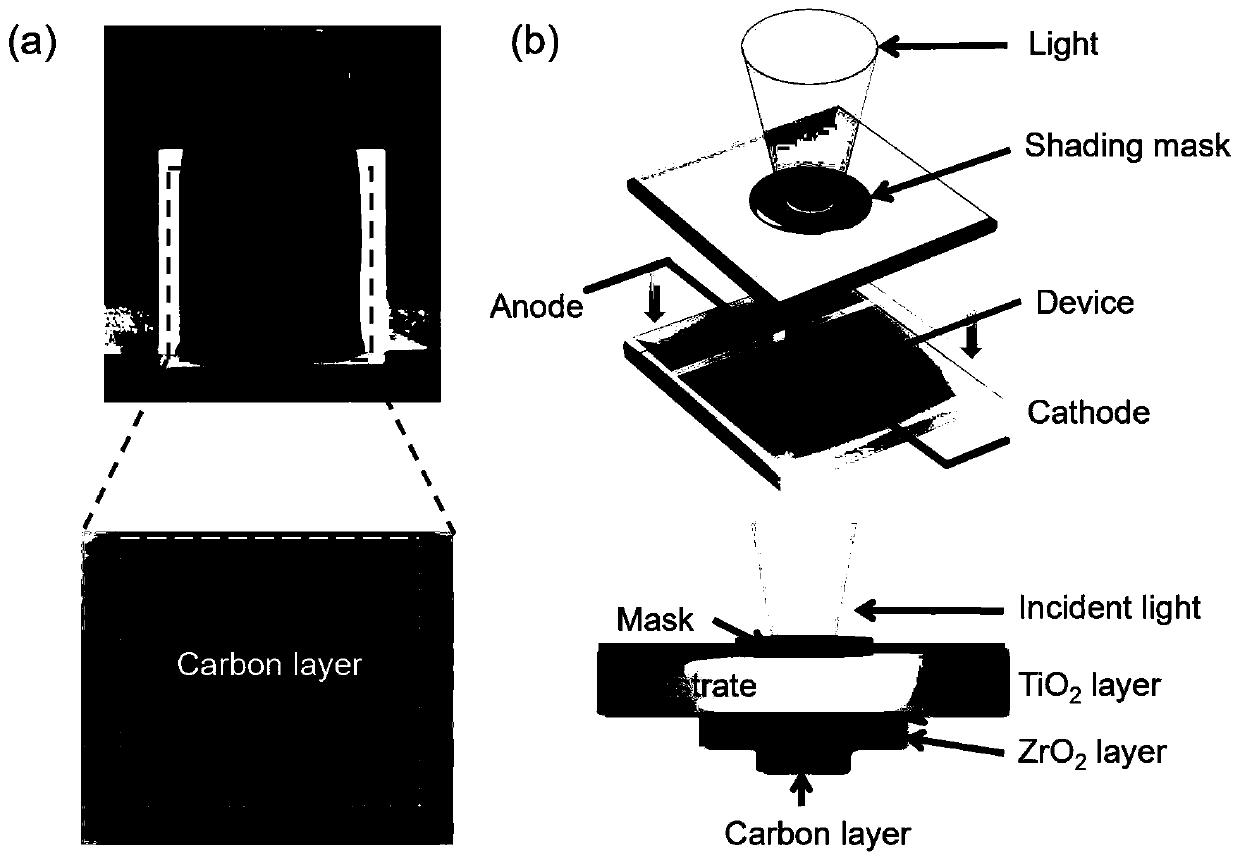Method for calibrating volt-ampere characteristic curve of solar cell
A volt-ampere characteristic curve, solar cell technology, applied in electrical digital data processing, special data processing applications, instruments, etc., can solve the problem of high current density in device testing, and achieve the effect of solving error problems, theoretical science, and rapid calibration
- Summary
- Abstract
- Description
- Claims
- Application Information
AI Technical Summary
Problems solved by technology
Method used
Image
Examples
Embodiment 1
[0053] (1) Select high-performance printable mesoscopic perovskite solar cells as test samples, but not limited to this. The size is 15mm×20mm, and the thickness of the fluorine-doped tin oxide glass substrate is 3mm, but it is not limited to this.
[0054] (2) We assemble the device with round hole shields with different apertures, the aperture area is from 0.031 cm 2 Increased to 0.503cm 2 , That is, the diameter is from 2mm to 8mm, and the thickness is 1mm, but not limited to this, test its volt-ampere characteristic curve in turn, and record its photoelectric parameters.
[0055] (3) such as figure 2 As shown in (a), when the area of the circular aperture is from 0.031cm 2 Increased to 0.503cm 2 , The short-circuit current density (J SC ) From 25.28mA cm -2 Down to 22.61mA cm -2 , And (PCE) increased from 13.53% to 14.11%, and then dropped to 11.17%. Open circuit voltage (V OC ) Increased from 847mV to 911mV, and the fill factor (FF) improved from 0.64 to 0.67, and then de...
Embodiment 2
[0060] This embodiment includes the following steps:
[0061] (1) Same as Example 1.
[0062] (2) We assemble the device with square hole shields with different apertures, the aperture area is from 0.031 cm 2 Increased to 0.504cm 2 , That is, the side length is from 1.75mm to 7.1mm, but not limited to this, test its volt-ampere characteristic curve in turn, and record its photoelectric parameters.
[0063] (3) For the results of measurement using a mask with square holes, similar values and trends can be observed as round holes. Such as figure 2 Shown.
[0064] (4) Count the short-circuit current density value and the corresponding reciprocal of the aperture of the shield (for square holes, the reciprocal is the reciprocal 1 / L of the side length). Tested short-circuit current density (J SC ) Is the dependent variable, and the reciprocal (1 / L) of the side length is the independent variable.
[0065] (5) Use an optional statistical software, such as Origin but not limited to this, s...
PUM
| Property | Measurement | Unit |
|---|---|---|
| Thickness | aaaaa | aaaaa |
Abstract
Description
Claims
Application Information
 Login to View More
Login to View More - R&D
- Intellectual Property
- Life Sciences
- Materials
- Tech Scout
- Unparalleled Data Quality
- Higher Quality Content
- 60% Fewer Hallucinations
Browse by: Latest US Patents, China's latest patents, Technical Efficacy Thesaurus, Application Domain, Technology Topic, Popular Technical Reports.
© 2025 PatSnap. All rights reserved.Legal|Privacy policy|Modern Slavery Act Transparency Statement|Sitemap|About US| Contact US: help@patsnap.com



